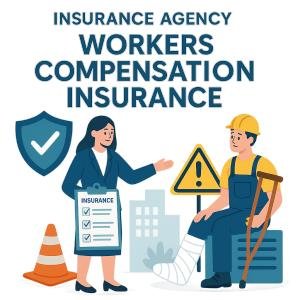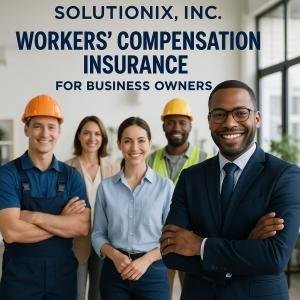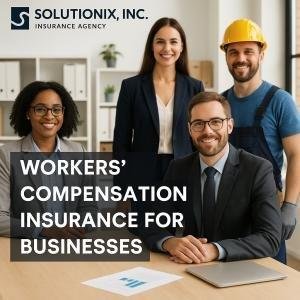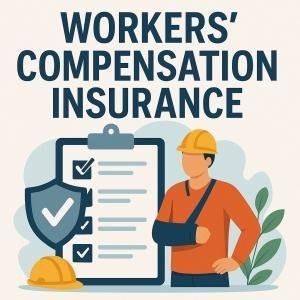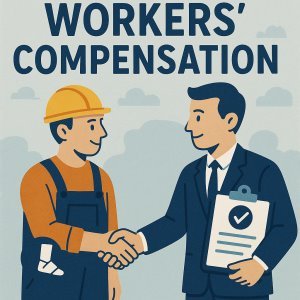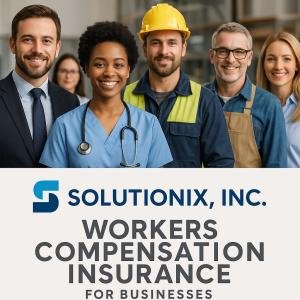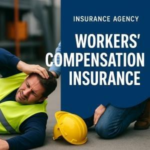
Avoid Misclassification: Georgia Workers’ Comp Class Codes for Security Guards
July 25, 2025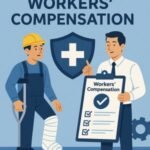
Adult Day Care Center Workers’ Comp Insurance: Compliance on a Budget
July 25, 2025
Slip-and-fall incidents remain a meaningful concern within the security industry, directly impacting the safety of Georgia’s security guard workforce and the associated workers’ compensation premiums.For security firms, minimizing these risks is not only a critical component of employee well-being but also a strategic approach to managing operational costs. This article explores effective slip-and-fall prevention strategies tailored to Georgia’s security sector, highlighting best practices that can definitely help organizations safeguard thier personnel while controlling insurance expenses. By proactively addressing these hazards, security companies can enhance workplace safety, reduce costly claims, and maintain competitive workers’ comp premiums.
Table of Contents
- Slip-and-Fall Risks Unique to Security Guard Roles in Georgia
- Evaluating Workplace Hazards and Environmental Factors Affecting Security Guards
- Implementing Proactive Safety Measures to Minimize Slip-and-Fall Incidents
- Training and Compliance Strategies to Support workers Compensation Cost Control
- Q&A
- In Summary
Slip-and-Fall Risks Unique to Security Guard Roles in Georgia

Illustration depicting workers’ compensation insurance concepts.
Georgia security guards often navigate a variety of environments, from dimly lit parking lots to slick building entrances during inclement weather, creating a unique set of slip-and-fall hazards.The extensive time spent outdoors exponentially increases exposure to unpredictable surfaces such as ice, wet leaves, and uneven pavement, which can lead to serious injuries. additionally, rapid emergency responses may prompt sudden movements on unstable ground, elevating risk factors substantially compared to other professions.
Key risk factors include:
- Long shifts in varying weather conditions without adequate footwear.
- Frequent patrols in low-visibility or cluttered areas.
- Carrying heavy equipment that affects balance and mobility.
- Rush demands resulting in hurried walking or running.
| Risk Factor | Preventive Measure |
|---|---|
| Uneven Pavement | Routine site inspections and repair |
| Wet or Icy Surfaces | Provision of anti-slip footwear and salt/grit application |
| Low Lighting | Installation of additional lighting and use of flashlight equipment |
| heavy equipment | Training on proper carrying techniques and load limits |
Evaluating Workplace Hazards and Environmental Factors Affecting Security Guards
- Regular inspection and maintenance of floors, stairways, and external areas.
- Installation of appropriate lighting to improve visibility in high-traffic zones.
- Employee training programs focused on hazard recognition and proper footwear selection.
- Use of anti-slip mats and warning signage in areas prone to moisture or spills.
| Hazard | Impact on Incidents | Recommended Controls |
|---|---|---|
| Wet or Slippery Floors | High risk during rain or cleaning cycles | anti-slip coatings,immediate spill cleanup |
| Poor Lighting | Reduced hazard visibility increasing trip risks | Additional lighting installation,periodic checks |
| Uneven Surfaces | Tripping hazards leading to serious injuries | Surface repairs,hazard markings |
Implementing Proactive Safety Measures to Minimize Slip-and-Fall Incidents
Creating a safer work environment for security guards requires a comprehensive approach that emphasizes active hazard identification and consistent risk mitigation. One effective strategy is regular facility audits to pinpoint potential slip hazards such as wet floors,uneven surfaces,or obstructed walkways. These audits should be coupled with employee training programs that educate guards on proper footwear, safe walking techniques, and immediate reporting of hazards. Implementing high-visibility signage during cleaning operations and ensuring prompt spill clean-up protocols are essential measures that protect both workers and reduce insurance claims.
Key steps to reinforcing safety protocols include:
- Installing slip-resistant flooring materials in high-traffic areas
- Providing anti-slip shoe accessories or mandates on proper footwear
- Utilizing technology such as motion-activated wet floor alerts
- Establishing a clear interaction system for hazard reporting
- Regularly updating safety policies based on incident data analysis
| Measure | Implementation Cost | Expected Impact on Premiums |
|---|---|---|
| Slip-resistant coatings | $500 – $1,500 | Moderate reduction |
| Employee Safety Training | $200 – $600 | High reduction |
| Real-time hazard reporting app | $1,000 – $3,000 | Significant reduction |
Training and Compliance Strategies to Support Workers Compensation Cost Control
| Compliance Item | Criteria | Status |
|---|---|---|
| footwear Policy | Non-slip boots worn during shifts | ✔ Met |
| Area Inspections | Daily hazard assessments | ✔ Ongoing |
| Training Completion | Quarterly slip prevention refreshers | ✔ Up to Date |
| Incident Reporting | Immediate documentation of near-misses | ✔ Consistent |
Q&A
Q&A: Slip-and-Fall Prevention to Protect Georgia Security Guard Workers’ comp premiums
Q1: Why is slip-and-fall prevention critical for security guard companies in Georgia?
A1: Slip-and-fall incidents are among the leading causes of workplace injuries for security guards. These injuries can lead to costly workers’ compensation claims,which directly impact a company’s premiums. By proactively preventing these accidents, security firms can reduce injury rates, protect employee well-being, and keep workers’ comp costs manageable.
Q2: What are the primary factors contributing to slip-and-fall accidents among security guards?
A2: Common factors include poor lighting, uneven or slippery surfaces, inadequate housekeeping, inclement weather conditions, and improper footwear. Security guards often patrol in diverse environments, increasing exposure to these hazards if not properly mitigated.
Q3: How can security companies effectively assess slip-and-fall risks in their workplaces?
A3: Conduct thorough site inspections focusing on floors, walkways, stairways, and outdoor grounds.Engage employees in identifying hazard-prone zones and review past incident reports. Utilizing professional safety audits or consulting with risk management experts can provide valuable insights.
Q4: What best practices should be implemented to minimize slip-and-fall hazards?
A4: Key practices include maintaining clean, dry, and clutter-free surfaces; installing anti-slip mats or coatings; ensuring sufficient lighting; providing appropriate footwear; and conducting regular training on hazard awareness and safe walking techniques.
Q5: How does slip-and-fall prevention influence workers’ compensation premiums?
A5: Workers’ comp insurers assess premium rates based on claim history and risk exposure. By reducing workplace injuries through effective prevention strategies,companies demonstrate lower risk profiles,which can result in decreased premiums and improved financial stability.
Q6: Are there Georgia-specific regulations that security firms should consider to prevent slip-and-fall injuries?
A6: Yes, security companies must comply with the Georgia Occupational Safety and Health Act (OSH Act), which aligns with federal OSHA standards. This includes maintaining safe walkways and ensuring that workplaces are free of recognized hazards that can cause slips, trips, or falls.
Q7: what role does employee training play in slip-and-fall prevention?
A7: Training is essential to educate security guards on hazard recognition,proper footwear selection,and safe movement techniques. Employees who understand how to identify and avoid risks contribute significantly to minimizing incidents.Q8: Can technology assist in slip-and-fall prevention for security firms?
A8: Yes, technologies such as slip-resistant flooring materials, remote monitoring with hazard detection, and wearables that track movement and alert to potential slips can enhance prevention efforts and foster a safer work environment.
Q9: How frequently enough should slip-and-fall prevention protocols be reviewed and updated?
A9: Prevention protocols should be reviewed regularly-at least annually or after any incident-to incorporate new risk assessments, regulatory changes, and advances in safety practices or technology.
Q10: What is the first step Georgia security guard companies should take to reduce slip-and-fall injuries and workers’ comp premiums?
A10: Begin with a comprehensive risk assessment and safety audit, followed by implementing a robust slip-and-fall prevention program that includes training, environmental controls, and ongoing monitoring to ensure effectiveness and continuous improvement.
In Summary
implementing effective slip-and-fall prevention strategies is essential for Georgia security firms aiming to safeguard their workers’ compensation premiums. By proactively addressing hazards and fostering a culture of safety, companies can reduce workplace injuries, enhance employee well-being, and ultimately achieve more stable insurance costs. Prioritizing prevention not only protects your workforce but also strengthens your organization’s financial health and reputation in a competitive market.
“This content was generated with the assistance of artificial intelligence. While we strive for accuracy, AI-generated content may not always reflect the most current information or professional advice. Users are encouraged to independently verify critical information and, where appropriate, consult with qualified professionals, lawyers, state statutes and regulations & NCCI rules & manuals before making decisions based on this content.”

